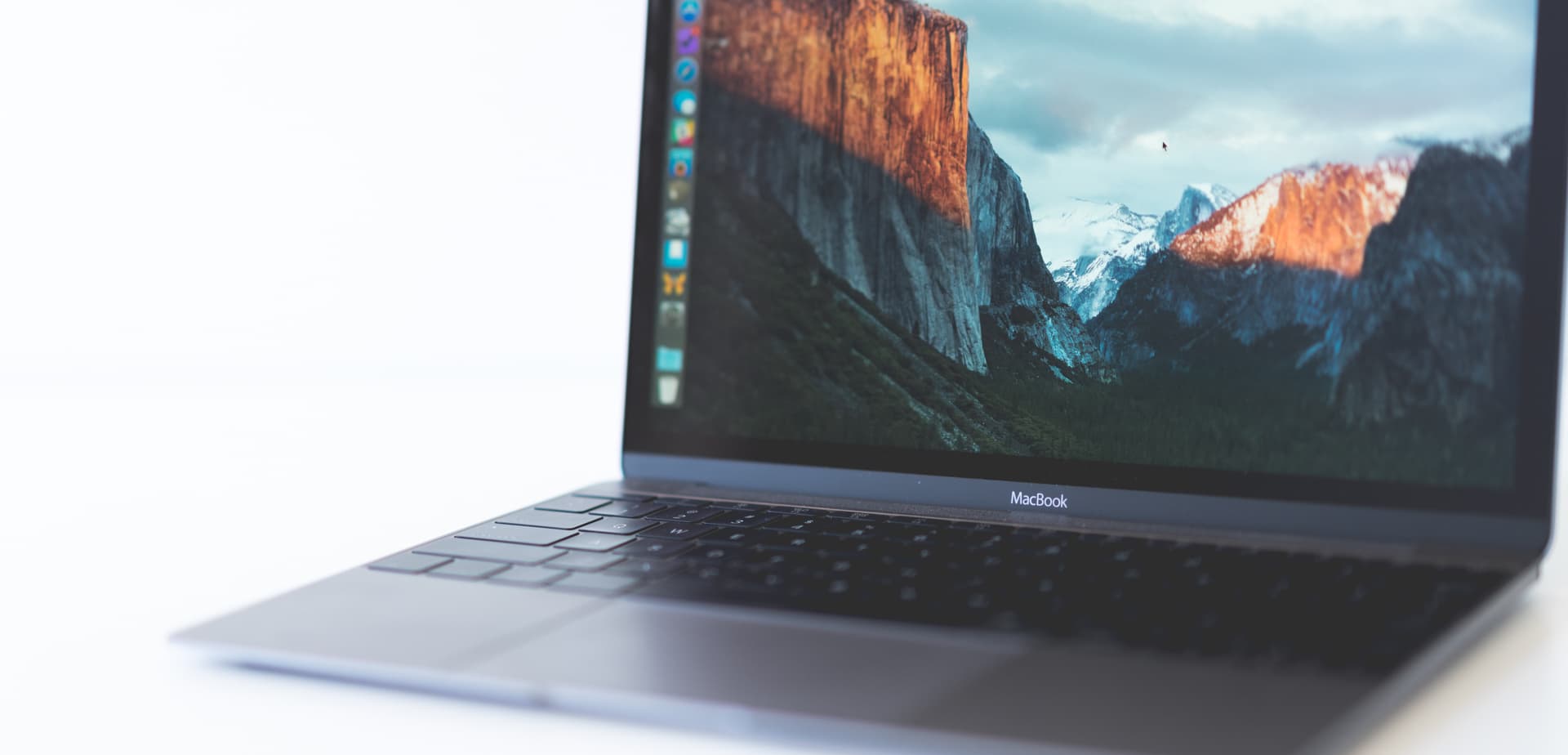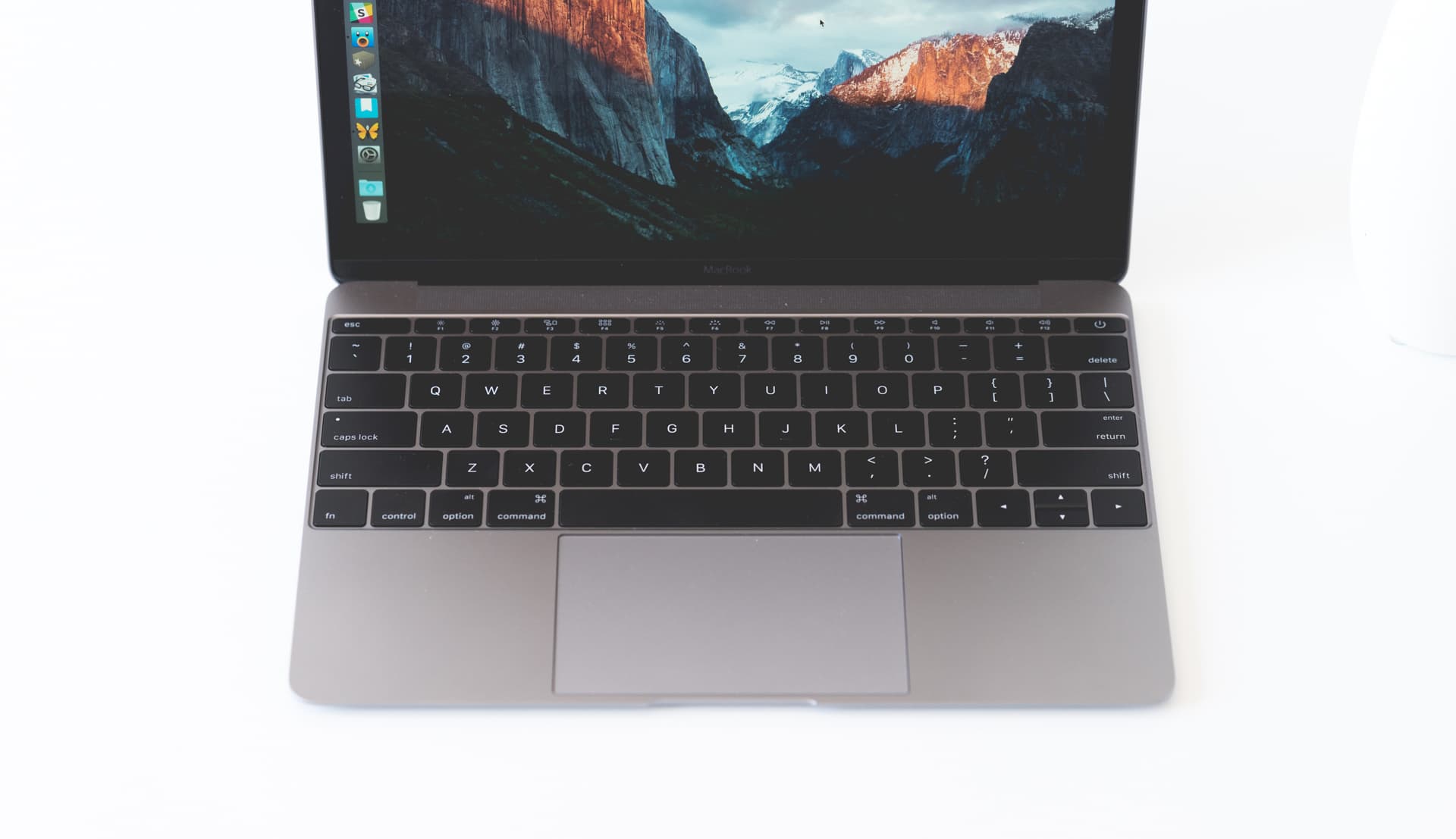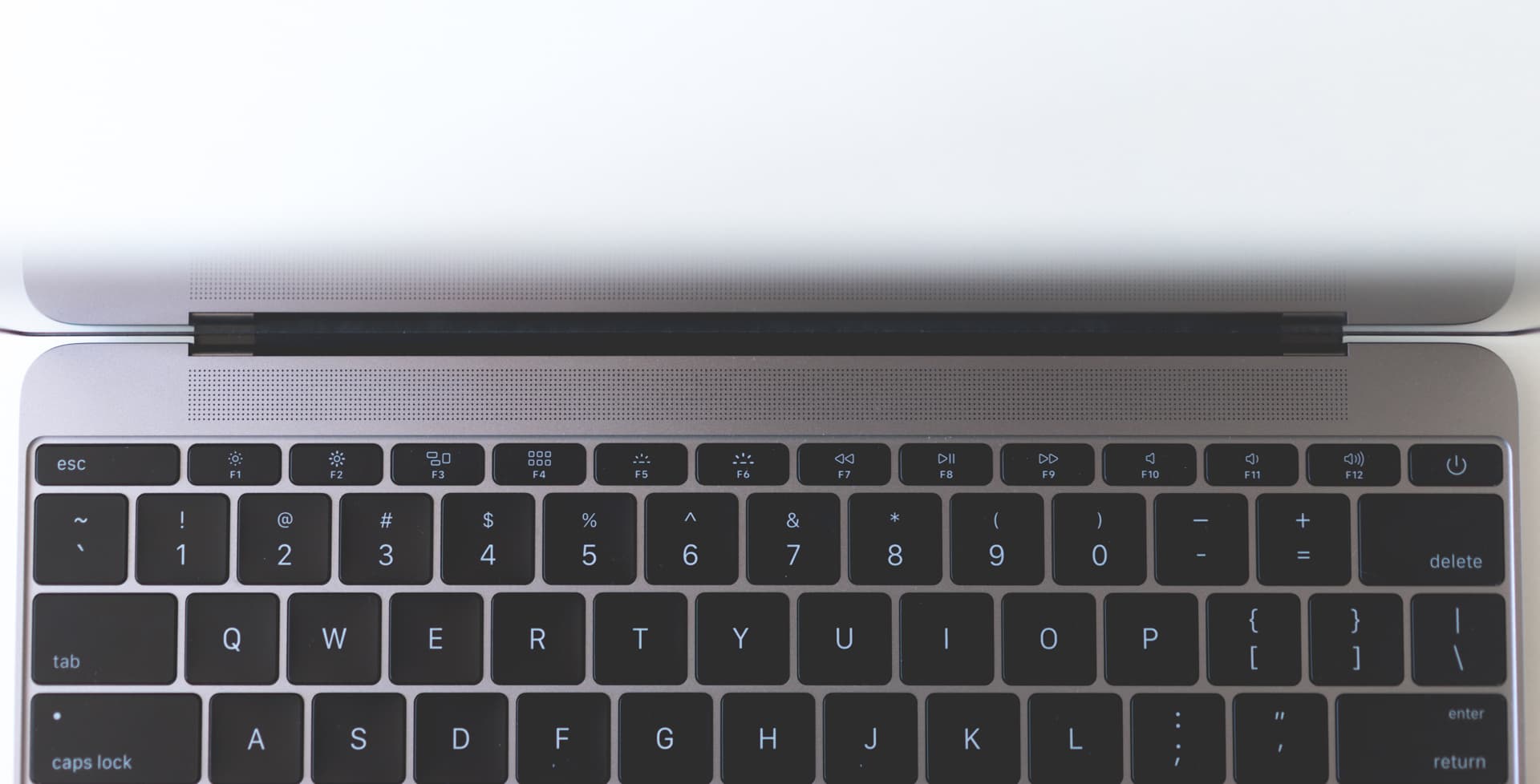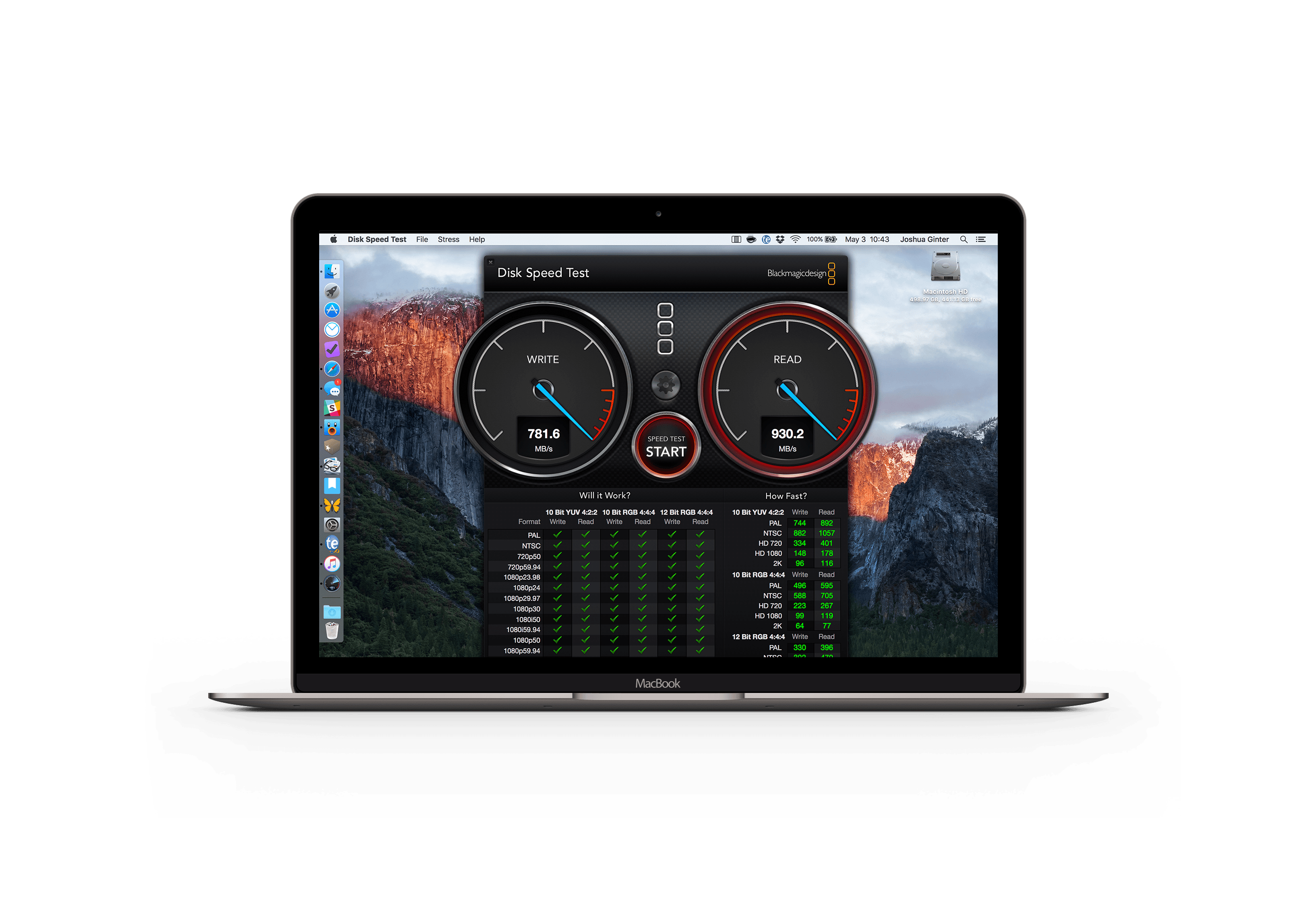Last week, I sold my iPad Pro to fund the purchase of Apple’s 2016 MacBook. Unfathomable, I know. Especially considering my love for the iPad Pro.

The decision wasn’t an easy one.
For our upcoming trip, I’ve been researching ways to store photos and videos, make a few edits, upload a few photos, and post a few blog posts, all while still remaining light enough to carry for 16 straight days. I probably had hundreds of choices, but it came down to three legitimate options:
Option 1: Keep our aging late-2012 13” Retina Macbook Pro, fix its defective battery, and upgrade the MacBook Pro’s internal storage. The battery fix and storage upgrade would have run about $800 CDN.
Option 2: Purchase a Western Digital My PassPort Wireless portable hard drive (which includes a built-in SD card slot) and bring the iPad Pro along for the ride. This would have only cost about $150-$200 CDN, but would have left me with no way to edit photos on the trip,1 a still-defective laptop in need of an upgrade or a fix, and a hard drive after the trip I’d never use.
Option 3: Sell the iPad Pro, fix and sell the 2012 MacBook Pro, and purchase one of Apple’s just-announced 12” MacBooks. I figured I could get about $1000 CDN for the iPad and net proceeds of $400-$500 CDN for the MacBook Pro (after fixing the battery). After buying the MacBook, this option would cost around $400 CDN. I’d have the tool and storage I’d need for our trip, but I would no longer have my trusty iPad.
Option 3 was middle of the road in terms of net cash cost and the most costly in terms of losing a device I’ve come to rely on. This option also provided the most logical (and thin and light) tool for our trip.
And so it is. I loved my iPad Pro and I will undoubtedly give in to the temptation of a new iPad in the future. But for the time being, I’m going to work with just an iPhone at the office and use the MacBook around the house or at the coffee shop if I need a change of scenery.
I spent 15 days at the end of February with Apple’s first generation 12” MacBook, and I came away from the trial as ambivalent as I was when heading in. The 12” MacBook’s screen and size were nothing short of perfect, but the keyboard jammed up all the time and I didn’t have enough time to come to terms with a single USB-C port. I figured a second generation MacBook would fix the two major problems I had. I returned the MacBook at the end of February and stuck it out with the iPad Pro.
Two weeks ago, when Apple announced the second generation MacBook, neither of my two complaints were explicitly addressed. The 2016 MacBook still ships with a single USB-C port and there were no reports about a fixed keyboard. Battery life was improved and the new MacBook is 25% faster, but neither of these two aspects truly concerned me.
All I really wanted was a better keyboard. Not even a better keyboard, really, but a non-jamming keyboard.
It took less than 30 seconds of typing in the Apple Store to feel that the new MacBook’s keyboard has been fine-tuned. Add in the speed increases from faster flash storage and improved processors and I took the chance.
Size and Build
There’s no change in this department for the 2016 MacBook. Same old, same old.
This time, I went with a space grey model instead of silver. Silver photographs better, but space grey is, well, space grey. It’s downright sexy.

I didn’t have the guts to go with the new rose gold colour, mind you. The rose gold MacBook is visually stunning with a level of pizazz we haven’t seen in a MacBook. It’s too striking for me, but it’ll be right up a number of alleys I’m sure.
Although not new, two design elements I’ve come to enjoy are the all-metal hinge and the chrome Apple logo. Like every Apple design, the chrome Apple logo makes the translucent logo look dated, dirty, and unpleasing. The all-metal hinge brings consistency to all aspects of the design and doesn’t break your visual train of thought. These are small elements — and completely subjective elements, at that — but I appreciate them more with the space grey MacBook than I did with the silver MacBook.

The bottom of the MacBook still gets quite hot after some heavier workloads and I’m surprised this wasn’t addressed with the second generation device. I don’t believe Apple could get away with creating a device that got so hot it could burn you, so I’m not worried about it.
Aside from this, if you have any experience with the first generation MacBook, there’s nothing new here.
Keyboard
Either I had a really bad keyboard on my trial MacBook, or Apple has silently altered the construction of its keys to prevent jamming and to improve clickiness. That trial MacBook was horrendous — many people likened typing on the first generation MacBook to tapping on glass, and my experience was much to that level. I really didn’t like the experience and the jammed keys only exacerbated the issue.

All my original frustrations are gone with the second generation MacBook. The keyboard feels a tad clickier to me, with more responsive key travel. I no longer feel like I’m tapping on glass, but rather feel like I’m typing with a thin keyboard. I imagine this is what Apple imagined the keyboard to feel like — it just took an extra 12 months to iron out the kinks.
After two to three weeks of use, my comfort level with this keyboard continues to grow. I believe I can type faster and more accurately with the MacBook — directly attributable to lesser key travel and more responsive keys. It’s actually become strange to jump into using the Wired Keyboard with Numeric Keypad (my beloved!). The increased key travel with that keyboard is jarring, especially after a full evening of Macbook typing only.

Which I do a lot of actually. This is a laptop for writers (see Matt Gemmell for some insight on this one, specifically the “Keyboard” section — his remarks about the feel and sound of the keyboard are impeccable), and although I don’t do as much writing as I’d like, I now prefer to do all my writing on this machine.
I tend to agree with anyone who says this butterfly-mechanism is the future of Apple’s keyboards. It’s extremely reactive — any inadvertent key press is a key stroke and not a key miss. I also prefer the shape of the these keys over older, smaller-keyed Apple keyboards. It’s taken some time, but I’m consistently finding I’d rather do long form typing on the MacBook than with any of the other keyboards in my house.
The keyboard also sounds different, which may be both good and bad. At the office, it’s easy to hear from a different room whether or not I’m typing on my personal laptop or on my work laptop. Just another way to know if I’m slacking off or not.
Battery Life
I didn’t realize battery life was a concern with the first MacBook. Now, you get an extra hour of power. At 10 hours, you can get through a full work day without plugging in.

I really like the USB-C charger. It’s smaller than any prior MacBook wall-wort I’ve had, so it fits better in my bag than ever before.
But getting rid of the size apparently gets rid of the excellent extension cord you get with MacBook Pros. The MacBook was never designed to be tethered to a battery charger, so I understand why the extension cord isn’t included. Fortunately it’s only a $19 add-on.
Sound
I never had a chance to compare the sound of the iPad Pro and the 12” MacBook, but I’m just not sure how they can compare. The sound churned out of this little laptop is amazing.
The stereo speakers on the MacBook blast upwards and towards you, which may provide a placebo for actual sound improvement.

Regardless, holy smokes is this thing loud. I can’t have the laptop more than one or two notches louder than mute without having my notifications ping the entire office. So while I’ll still play music through a dedicated set of speakers when at home and through a set of headphones when on the go, these speakers are wonderful for watching a movie in bed with my wife.
Display
I bought this computer for two reasons: mobile storage and mobile RAW photo editing. We’ll get to performance in a bit, but I guarantee this display will be a selling feature for photographers.
Pixel density is great, allowing for up-close pixel peeping of the sharpness of the lenses in your arsenal.

But I’m more impressed with the colour. I don’t have any way to scientifically prove the MacBook’s screen is the most vibrant I’ve ever used, but I can’t help but feel that way.
Googling which laptop to buy as a photographer never includes the MacBook in the discussion, but this screen should put it near the top of the list. It may take an extra second or two to process an edit or import 50MB uncompressed RAW files, but I’m of the belief that screen quality and colour quality are more important than processing speed. To this end, the MacBook beats any laptop currently available.
USB-C
I’m convinced we collectively view the MacBook’s single USB-C port in the wrong light. Most question the MacBook and wonder why it only comes with one port. But the more I carry this laptop with me, the more I wonder why every other computer requires the extra ports.

In a lot of ways, the MacBook is the purest form of a computer you can find today. There are no frills anywhere. Instead of forcing every buyer to haul around an extra USB port, two Thunderbolt ports, and an HDMI port, the MacBook allows you to shed the extra and only bring along what you need. Start with a single USB-C port and add on what you need. The MacBook is the first building block.
I understand this is a rosy way of looking at it. I’m infatuated with this computer and just want to say something different about this USB-C port than the rest of the world.
In all honesty though, I find the single port quite liberating. All I need is the occasional SD card slot to import some photos and a USB-A port to plug in a microphone. For those rare times I need a peripheral, I’d rather have a single port and an adapter than have all the ports, all the time.
Performance
The 2016 MacBook’s biggest selling feature is its improved horsepower. Like any good salesman though, the supposed 25% speed gains are actually 25%, and they only come in specific (read, non-baseline) models. The baseline 2016 MacBook has performance gains of 5-10% in speed, the mid-range has gains of 15-18%, and the top-end model has gains between 9-17%.
The other major speed increases come in the form of a speedier flash storage unit. Again though, not all gains are created equal. If you take a quick peek at this video by Michael Kukielka and skip to about the 8:50 mark, you’ll see differences in flash storage speed between the baseline models and the mid and top-end models.

The 512GB flash storage module in the mid-range MacBook writes anywhere between 750mbps and 800mbps, while the baseline model writes slightly slower around the 600mbps to 650mbps.
So when you combine the biggest average processor speed gains, flash storage gains, and flash storage size increases found in the mid-range (Core M5) MacBook, I feel it’s the best bang for the buck in the MacBook range.
512GB of nearly gigabyte-per-second read and write speeds help give this MacBook life. Processing edits on RAW files, resizing JPGs, opening 30 tabs in Safari — sure, the computer can get a bit pokey. But to have that speedy storage in a machine less than a quarter inch thick? Don’t mind me while I wait the extra half second for the MacBook to finish its job.
In terms of storage, this MacBook is actually the best bang for your buck in Apple’s entire notebook lineup. A 256GB 13” MacBook Pro weighs in at $1,500 USD, while the MacBook sits nicely at $1,300 USD. Jumping to the 512GB size is more painful: A 512GB MacBook sets you back $1,600 USD, while the same sized MacBook Pro comes in at $1,800. There are tons of other benefits packed into that extra $200. But if you’re in the market for a laptop with lots of storage space, the MacBook is the best choice.
Conclusion
I’ll admit, I miss my iPad. It’s still the best Apple device for reading text, browsing the Internet, and watching videos. The bigger iPad Pro’s split-screen multitasking is an extremely efficient way to get work done and the smaller iPad Pro’s screen is the best screen you can buy, period.
But right now, the MacBook brings more to the table than the iPad. And the 2016 MacBook — so far — brings just the right performance gains to make it a killer device.
For me. Right now. At this point in time.

If the MacBook’s gorgeous display, pokey processor, single USB-C port, and minuscule footprint are for you, reach deep into your pocket and get the Core M5 model. It’s expensive — $1,600 USD or $1,900 CDN — but those are well spent dollars.
iOS does not yet have proper RAW photography support. The Sony a7II — or any Sony camera in general — is best used in the RAW format in order to take advantage of the sensor’s incredible dynamic range. So, while I could use the iPad to store photos, I couldn’t use the iPad to edit them. Now, I’m also aware you can edit RAW photos on the iPad. But any RAW photo editor on the iPad sucks, and the fact Photos.app doesn’t have RAW support is indicative the iPad isn’t meant for the RAW format. ↩